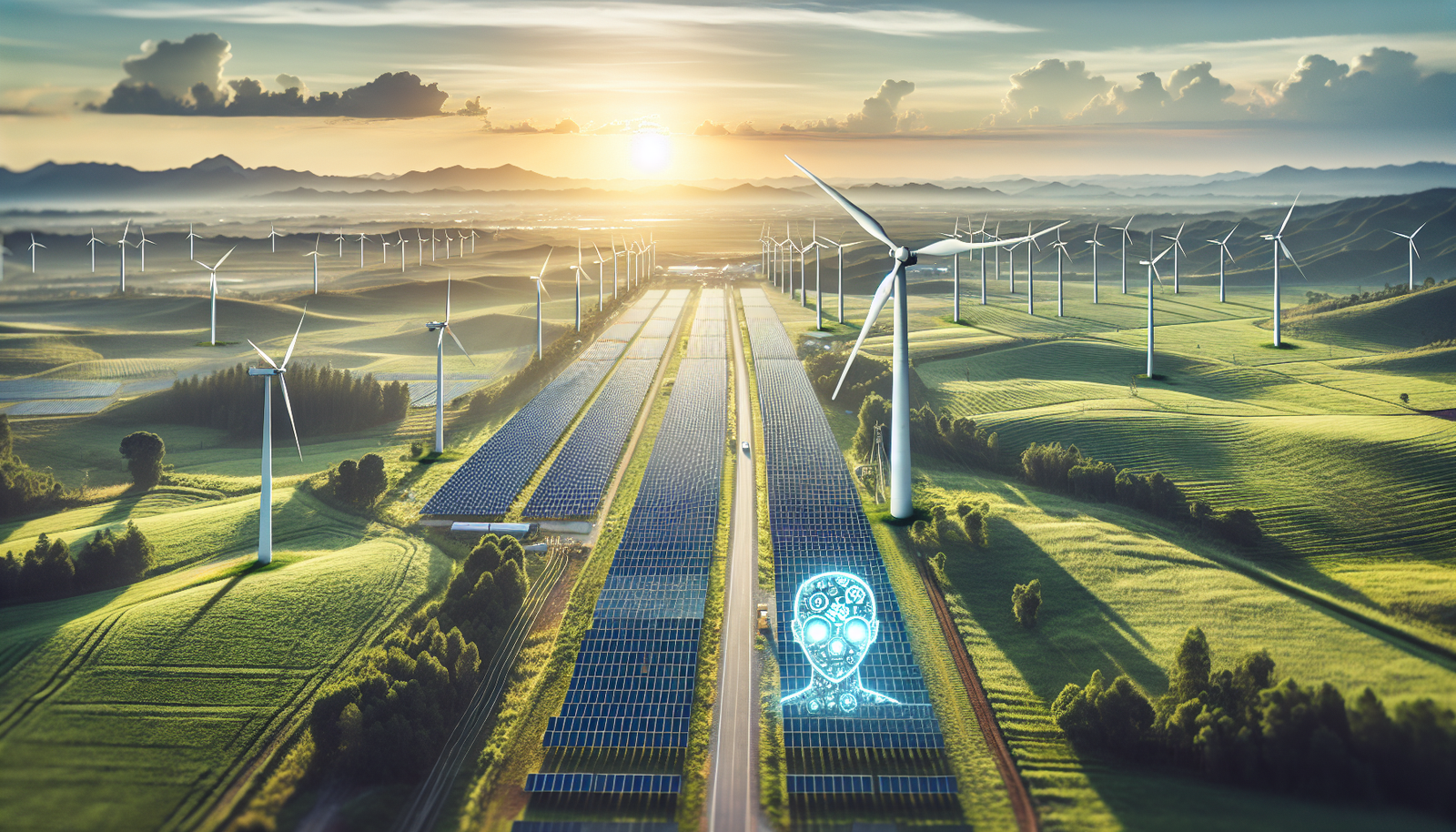Understanding Sustainable Development Goals
The Sustainable Development Goals (SDGs), established by the United Nations in 2015, are a universal call to action to end poverty, protect the planet, and ensure prosperity for all by 2030. These 17 goals are integrated and indivisible, balancing the three dimensions of sustainable development: the economic, social, and environmental. Each goal has specific targets to be achieved over the next 15 years, with a total of 169 targets spread across the goals. The SDGs provide a shared blueprint for peace and prosperity for people and the planet, now and into the future.
Economic Sustainability: The economic dimension of the SDGs focuses on promoting sustained, inclusive, and sustainable economic growth, full and productive employment, and decent work for all. Goals such as SDG 8 (Decent Work and Economic Growth) and SDG 9 (Industry, Innovation, and Infrastructure) aim to foster innovation and build resilient infrastructure. Strategic partnerships play a crucial role in mobilizing and sharing knowledge, expertise, technology, and financial resources to support the achievement of these objectives.
Social Sustainability: Social aspects are equally vital, with goals targeting the eradication of poverty and hunger, the achievement of gender equality, and the reduction of inequalities within and among countries. For instance, SDG 1 (No Poverty) and SDG 5 (Gender Equality) aim to empower marginalized communities and promote social inclusion. Collaborative efforts are essential in creating equitable societies and ensuring no one is left behind.
Environmental Sustainability: The environmental pillar of the SDGs emphasizes the need to sustainably manage natural resources and take urgent action on climate change. Goals such as SDG 13 (Climate Action) and SDG 15 (Life on Land) highlight the importance of preserving our ecosystems. Here, AI-driven collaborations can offer innovative solutions for monitoring environmental changes and optimizing resource management.
| SDG | Focus Area |
|---|---|
| SDG 8 | Economic Growth |
| SDG 9 | Industry & Innovation |
| SDG 1 | No Poverty |
| SDG 5 | Gender Equality |
| SDG 13 | Climate Action |
| SDG 15 | Life on Land |
The Role of AI in Achieving SDGs
Artificial Intelligence (AI) plays a pivotal role in advancing Sustainable Development Goals (SDGs) by offering innovative solutions that address complex global challenges. AI technologies can process vast amounts of data, enabling more accurate predictions and efficient resource management. By leveraging AI, organizations can optimize operations and reduce waste, thus contributing to environmental sustainability. For instance, AI-powered systems can monitor and predict climate patterns, assisting in disaster management and resilience planning.
Moreover, AI contributes significantly to social sustainability by enhancing education, healthcare, and inclusivity. AI-driven platforms can personalize learning experiences, making education more accessible and effective. In healthcare, AI algorithms can analyze medical data to improve diagnostics and patient care, leading to better health outcomes. Furthermore, AI can promote inclusivity by breaking down language barriers and providing assistive technologies for people with disabilities.
Economically, AI fosters sustainable growth by driving innovation and creating new job opportunities. AI can automate repetitive tasks, allowing the workforce to focus on more strategic roles that require human creativity and decision-making. This transition supports economic development while ensuring that growth is inclusive and equitable. AI also enables companies to develop sustainable business models that prioritize long-term value over short-term profits.
In summary, AI’s role in achieving SDGs is multifaceted, encompassing environmental, social, and economic dimensions. By forming strategic partnerships, stakeholders can harness AI’s potential to create a sustainable future. The collaborative efforts between AI developers, policymakers, and communities are crucial to ensuring that AI technologies are used responsibly and effectively to meet the SDGs.
| AI Application | SDG Contribution | Impact |
|---|---|---|
| Climate Prediction | Environmental Sustainability | Improved disaster management |
| Personalized Education | Social Sustainability | Increased accessibility |
| Automated Operations | Economic Sustainability | Increased efficiency and innovation |
Building Effective AI Partnerships
Building effective AI partnerships involves a strategic approach that combines technological innovation with a deep understanding of the Sustainable Development Goals (SDGs). Collaborative efforts between governments, private sector companies, and non-profit organizations can harness AI to address complex global challenges. These partnerships require a clear definition of roles and responsibilities, ensuring that all stakeholders are aligned with the common goal of achieving sustainability. By fostering open communication and trust, these collaborations can create synergies that amplify the impact of AI technologies.
Key factors in establishing successful AI partnerships include mutual objectives, resource sharing, and a commitment to ethical AI practices. Partnerships should aim to leverage the strengths of each participant, whether it be technological expertise, data resources, or regulatory support. It’s essential to create a framework that allows for the continuous exchange of ideas and innovations. These frameworks often incorporate data visualization tools to track progress and outcomes effectively. For instance, visual dashboards can display real-time data on environmental impacts or social improvements, allowing partners to adjust strategies as needed.
The following table illustrates the components of effective AI partnerships:
| Component | Description |
|---|---|
| Mutual Objectives | Aligning goals with the SDGs to ensure all partners are working towards a common purpose. |
| Resource Sharing | Pooling of technological, financial, and human resources to maximize efficiency and impact. |
| Ethical Practices | Adopting ethical guidelines to ensure AI’s responsible use and to protect stakeholders’ rights. |
Moreover, transparency and accountability are critical in AI partnerships. Regular assessments and reporting mechanisms should be established to monitor the progress and outcomes of AI-driven initiatives. This transparency not only builds trust among partners but also with the public and other stakeholders. By showcasing successful case studies and sharing best practices, these partnerships can inspire further collaborations and innovations in the pursuit of the SDGs.
AI and Environmental Sustainability
Artificial Intelligence (AI) has emerged as a pivotal tool in addressing environmental challenges and promoting sustainability. By leveraging machine learning algorithms and data analytics, AI can optimize resource management, reduce waste, and enhance conservation efforts. For instance, AI-driven systems can predict energy consumption patterns, enabling more efficient use of resources and reducing carbon footprints. Additionally, AI technologies are instrumental in monitoring environmental changes, providing real-time data that can inform policy and decision-making.
One of the significant applications of AI in environmental sustainability is in climate change mitigation. AI models can analyze vast datasets to forecast weather patterns, track greenhouse gas emissions, and predict the impacts of climate change on various ecosystems. These insights are crucial for developing strategies that minimize environmental harm and foster resilience. Moreover, AI-powered tools are being used to design smart grids that improve energy efficiency and integrate renewable energy sources, helping to reduce reliance on fossil fuels.
AI also plays a crucial role in biodiversity conservation. Machine learning algorithms are used to analyze images and sounds captured in natural habitats, identifying species and monitoring their populations. This technology aids in the protection of endangered species by providing data that can be used to implement targeted conservation efforts. Furthermore, AI can assist in detecting illegal activities such as poaching and deforestation through satellite imagery analysis, ensuring that conservation laws are enforced effectively.
In the realm of agriculture, AI contributes to environmental sustainability by promoting precision farming techniques. AI systems can assess soil health, water availability, and crop conditions, enabling farmers to optimize resource use and minimize environmental impact. This not only enhances productivity but also ensures that agricultural practices are sustainable in the long term. By embracing AI-driven solutions, we can make significant strides toward achieving environmental sustainability and the broader Sustainable Development Goals (SDGs).
AI in Social and Economic Development
Artificial Intelligence (AI) has emerged as a powerful tool in driving social and economic development across the globe. By integrating AI into various sectors, communities can address pressing challenges and open up new avenues for growth. AI technologies, such as machine learning and data analytics, are being utilized to enhance decision-making processes, optimize resource allocation, and improve the delivery of essential services. This transformation is particularly evident in developing regions, where AI-driven projects aim to bridge gaps in education, healthcare, and financial inclusion.
In the realm of social development, AI applications are making significant strides. For example, AI-powered platforms are being used to develop personalized learning experiences in education, adapting to individual student needs and improving overall educational outcomes. Additionally, AI’s ability to process large datasets allows for better tracking of social issues, such as poverty and inequality, enabling policymakers to design more effective interventions. The use of AI in healthcare, through predictive analytics and diagnostic tools, is also expanding access to medical services and improving patient care in underserved areas.
Economic development is equally benefiting from AI advancements. The automation of routine tasks and enhanced data-driven insights are leading to increased productivity and efficiency in various industries. AI’s role in economic development can be effectively illustrated through the following key areas:
- Financial Services: AI algorithms are being used to detect fraudulent activities, assess credit risks, and provide personalized financial advice, thereby enhancing the stability and inclusiveness of financial systems.
- Agriculture: AI-driven technologies, such as precision farming and crop monitoring, are optimizing agricultural practices, reducing waste, and increasing food security.
- Manufacturing: The integration of AI in manufacturing processes is leading to smarter production lines, reduced operational costs, and higher-quality products.
These examples demonstrate how AI is not only a catalyst for innovation but also a fundamental component in achieving the Sustainable Development Goals (SDGs) related to social and economic progress. By fostering collaborations between AI developers, governments, and local communities, the potential for AI to drive sustainable development is vast and promising.
Challenges in AI and Sustainability Partnerships
Despite the promising potential of AI-driven collaborations to advance Sustainable Development Goals (SDGs), several challenges persist in the realm of AI and sustainability partnerships. One significant issue is the integration of diverse data sources. AI systems require vast amounts of data to function effectively, and in the context of SDGs, this data often comes from multiple sectors and regions, each with its own standards and formats. Ensuring compatibility and interoperability can be a daunting task, requiring extensive coordination and standardization efforts.
Another challenge is the ethical use of AI in sustainability initiatives. AI systems can inadvertently perpetuate biases present in the data they are trained on, leading to unfair or inaccurate outcomes. For instance, an AI model designed to optimize resource allocation might prioritize regions with more comprehensive data, inadvertently neglecting underrepresented areas. Addressing these ethical concerns requires a concerted effort to ensure that AI systems are transparent, fair, and inclusive.
The financial constraints associated with implementing AI technologies in sustainability projects also pose a significant hurdle. Many organizations, particularly in developing regions, may lack the necessary resources to invest in advanced AI infrastructure. This financial barrier can limit the scalability and impact of AI-driven sustainability efforts. To mitigate this, innovative funding models and public-private partnerships are essential to bridge the gap between technological capabilities and financial accessibility.
Finally, the lack of skilled personnel in AI and data science can impede the progress of sustainability partnerships. As the demand for AI expertise grows, the shortage of qualified professionals becomes more pronounced, especially in sectors focused on sustainability. To overcome this challenge, investment in education and training programs is crucial, ensuring that the workforce is equipped with the necessary skills to harness AI for sustainable development effectively.
Case Studies of Successful AI-SDG Initiatives
AI and Environmental Sustainability: One of the most notable examples of AI-driven initiatives is the collaboration between tech companies and environmental organizations to monitor deforestation. By utilizing machine learning algorithms, these collaborations have successfully mapped out vulnerable forest areas, predicting potential deforestation activities. This initiative has not only provided real-time data but also empowered local governments to take timely action. For instance, in the Amazon rainforest, AI systems have been able to detect illegal logging activities with high accuracy, significantly reducing the rate of deforestation.
AI Enhancing Social Well-being: Another case study worth highlighting is the use of AI in improving healthcare access in remote areas. AI-powered mobile applications have been developed to assist healthcare workers in diagnosing and treating patients without needing a physical doctor present. These applications use AI to analyze symptoms and suggest possible treatments, benefiting communities with limited access to healthcare facilities. In India, such initiatives have seen a reduction in mortality rates and improved overall health outcomes, showcasing the potential of AI in achieving social sustainability.
AI for Economic Growth: In the realm of economic sustainability, AI has played a crucial role in optimizing supply chains and reducing waste. Companies collaborating on AI-driven supply chain solutions have reported increased efficiency and reduced costs. For example, a joint venture between a global retail company and an AI firm resulted in a 20% reduction in inventory costs and a 30% decrease in delivery times. These improvements not only boost economic growth but also contribute to reducing the carbon footprint of supply chain operations.
These case studies exemplify the transformative power of AI when aligned with Sustainable Development Goals. By fostering strategic partnerships across various sectors, AI-driven initiatives continue to pave the way for a more sustainable and equitable future. The potential for AI to contribute to each of the SDGs is vast, and these examples are just the beginning of what can be achieved through thoughtful collaboration and innovation.
Future Prospects and Innovations
The future of AI-driven collaborations in achieving Sustainable Development Goals (SDGs) holds immense potential, marked by continuous innovations and strategic partnerships. As technology advances, AI is expected to become more integral in addressing complex global challenges. Predictive analytics and machine learning are poised to revolutionize how we approach environmental sustainability. For instance, AI can analyze vast datasets to predict climate patterns and propose proactive measures to mitigate adverse effects.
Looking ahead, the integration of AI in social sustainability initiatives will likely lead to significant improvements in areas such as healthcare, education, and equality. AI-powered tools can help identify gaps in educational resources and suggest targeted interventions, ensuring inclusive and equitable quality education across different regions. The potential for AI to enhance healthcare accessibility and efficiency is equally promising, with innovations like AI diagnostics and personalized medicine.
Economic sustainability also stands to benefit from AI innovations. By optimizing resource allocation and improving supply chain efficiency, AI can drive economic growth while minimizing environmental impact. Future collaborations between governments, private sectors, and AI developers are crucial in creating frameworks that maximize these benefits. As we move towards a more interconnected world, it becomes essential to establish ethical guidelines and regulatory measures to ensure AI technologies are used responsibly and equitably.
| Domain | AI Application | Future Impact |
|---|---|---|
| Environmental Sustainability | Predictive Analytics | Enhanced climate change mitigation strategies |
| Social Sustainability | AI Diagnostics | Improved healthcare access and personalization |
| Economic Sustainability | Resource Optimization | Increased economic growth with reduced environmental impact |
Ethical Considerations in AI for Sustainability
The integration of artificial intelligence (AI) in sustainable development initiatives presents both opportunities and challenges, particularly in terms of ethical considerations. As AI technologies are deployed to address environmental, social, and economic issues, it is crucial to ensure that these technologies are used responsibly and transparently. Ethical AI involves ensuring fairness, accountability, and transparency, which are essential for fostering trust in AI-driven collaborations. Organizations must adopt guidelines and frameworks that promote the ethical use of AI to support Sustainable Development Goals (SDGs).
One of the primary ethical concerns is data privacy. AI systems rely heavily on vast amounts of data, which often include personal information. Ensuring that this data is collected, stored, and used in compliance with privacy regulations is crucial to prevent misuse and protect individuals’ rights. Transparency in AI algorithms is also vital; stakeholders should have access to information about how AI decisions are made, especially when these decisions impact communities and ecosystems. This transparency builds accountability and helps in identifying biases within AI systems.
Moreover, the ethical deployment of AI for sustainability requires addressing the issue of bias. AI systems can inadvertently perpetuate existing biases or create new ones if not carefully managed. This is particularly concerning in social sustainability projects where AI might influence resource distribution or policy-making. To mitigate bias, it is essential to use diverse datasets and involve multidisciplinary teams in the development and deployment of AI technologies. Below is a summary table that highlights key ethical considerations in AI for sustainability:
| Ethical Consideration | Description |
|---|---|
| Data Privacy | Ensuring data is handled in compliance with regulations to protect individual privacy. |
| Transparency | Providing clear information on how AI decisions are made and implemented. |
| Bias | Addressing and mitigating biases in AI to ensure fair and equitable outcomes. |
In conclusion, while AI offers significant potential for advancing sustainable development, ethical considerations must be at the forefront of AI-driven collaborations. By addressing these ethical issues, organizations can enhance the positive impact of AI on sustainability and ensure that technological advancements contribute to a fairer and more sustainable future.
Engaging Stakeholders in AI Partnerships
The engagement of stakeholders in AI partnerships is crucial for the successful implementation and impact of AI-driven initiatives aimed at achieving the Sustainable Development Goals (SDGs). Effective stakeholder engagement involves identifying and collaborating with various parties including governments, private sector companies, non-governmental organizations (NGOs), and local communities. These collaborations ensure that diverse perspectives are considered, and that AI solutions are tailored to meet the specific needs of different groups.
Governments play a pivotal role in facilitating AI partnerships by providing regulatory frameworks and funding opportunities. They can act as catalysts for innovation and help in scaling AI solutions across regions. Private sector companies contribute technological expertise and resources, driving the development and deployment of AI tools. Their involvement is essential for bridging the gap between technology providers and end-users.
NGOs and local communities are vital in ensuring that AI-driven projects are aligned with the needs and priorities of the people they are intended to serve. NGOs often act as intermediaries, bringing together various stakeholders and fostering collaboration. Local communities provide invaluable insights into the contextual challenges and opportunities, ensuring that AI interventions are relevant and impactful.
| Stakeholder | Role in AI Partnerships |
|---|---|
| Government | Provide regulatory support and funding |
| Private Sector | Offer technological expertise and resources |
| NGOs | Facilitate collaboration and align projects with community needs |
| Local Communities | Provide contextual insights and ensure relevance |
Creating a structured approach to stakeholder engagement can enhance the effectiveness of AI partnerships. This involves establishing clear communication channels, defining roles and responsibilities, and setting measurable objectives. By doing so, stakeholders can work collaboratively towards a common goal, leveraging their unique strengths to achieve sustainable outcomes.
Leveraging AI for Global Impact
Artificial Intelligence (AI) has emerged as a transformative tool in addressing global challenges, particularly in the realm of sustainable development. By harnessing the power of AI, organizations and governments can optimize resources, enhance decision-making processes, and foster innovative solutions that align with the Sustainable Development Goals (SDGs). This section delves into the various ways AI can be leveraged to create a significant global impact, highlighting its role in environmental, social, and economic dimensions.
Environmental sustainability is one of the key areas where AI can make a difference. Through advanced data analytics and machine learning algorithms, AI can predict climate patterns, optimize energy use, and improve waste management systems. For instance, AI-driven weather models can provide accurate forecasts, helping communities prepare for extreme weather events. Moreover, AI can enhance the efficiency of renewable energy sources by optimizing power grids and reducing energy loss. This not only contributes to a reduction in carbon emissions but also supports the transition towards cleaner energy systems.
In the social domain, AI has the potential to improve healthcare access and education quality, thus contributing to the overall well-being of communities. AI-powered diagnostic tools can assist healthcare professionals in identifying diseases at an early stage, making treatments more effective and affordable. Additionally, AI-driven educational platforms can personalize learning experiences, catering to the individual needs of students and reducing educational disparities. These advancements demonstrate AI’s capacity to drive social change and improve quality of life across different demographics.
Economically, AI can foster sustainable growth by enhancing productivity and creating new job opportunities. AI technologies can streamline operations, reduce costs, and increase efficiency across various industries. For instance, AI in agriculture can optimize crop yields and reduce resource consumption, leading to more sustainable farming practices. As industries adopt AI solutions, there is also a growing demand for skilled professionals to develop and manage these technologies, thereby boosting employment prospects. In summary, AI’s integration into strategic partnerships for achieving SDGs can lead to profound advancements in environmental, social, and economic sustainability.



